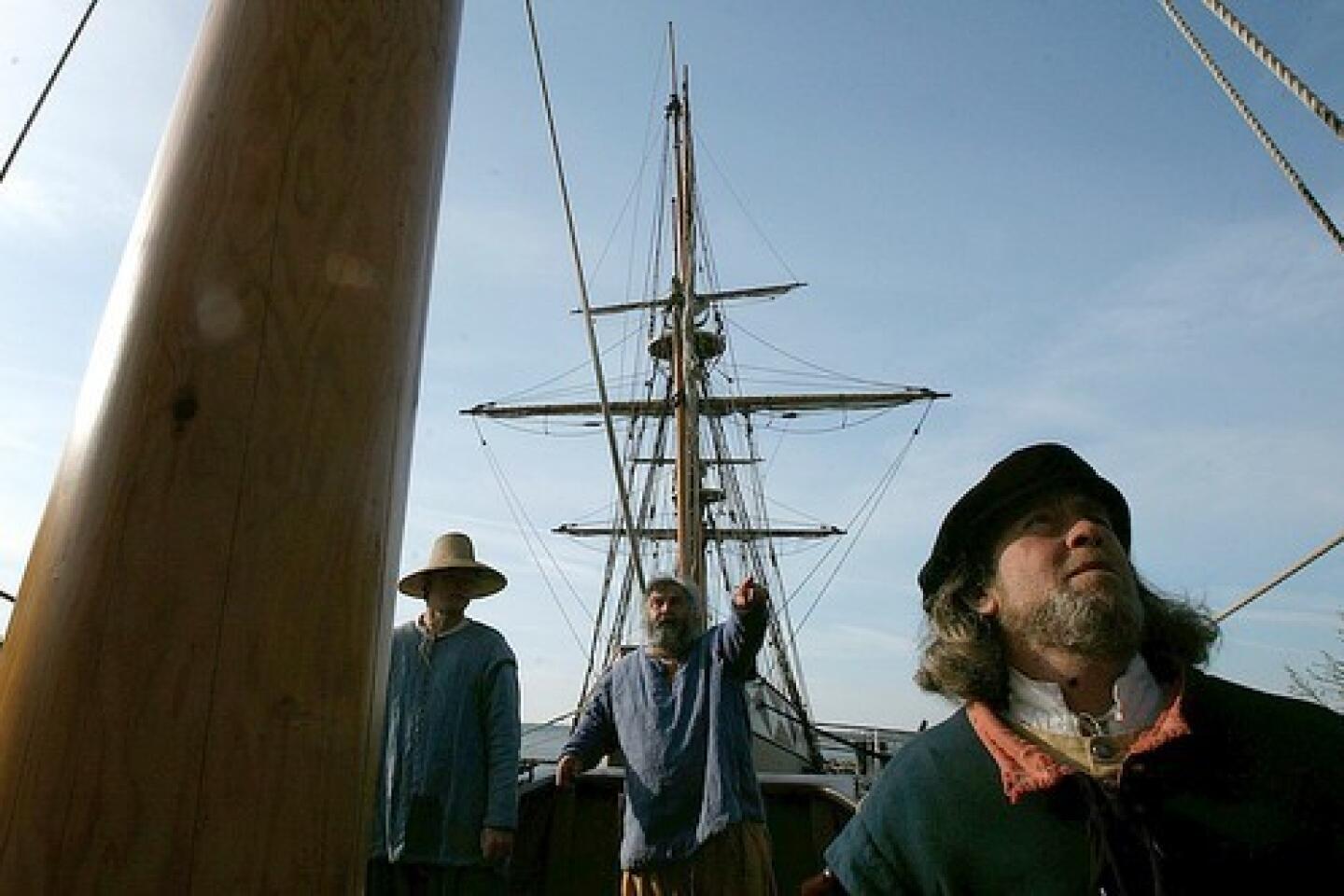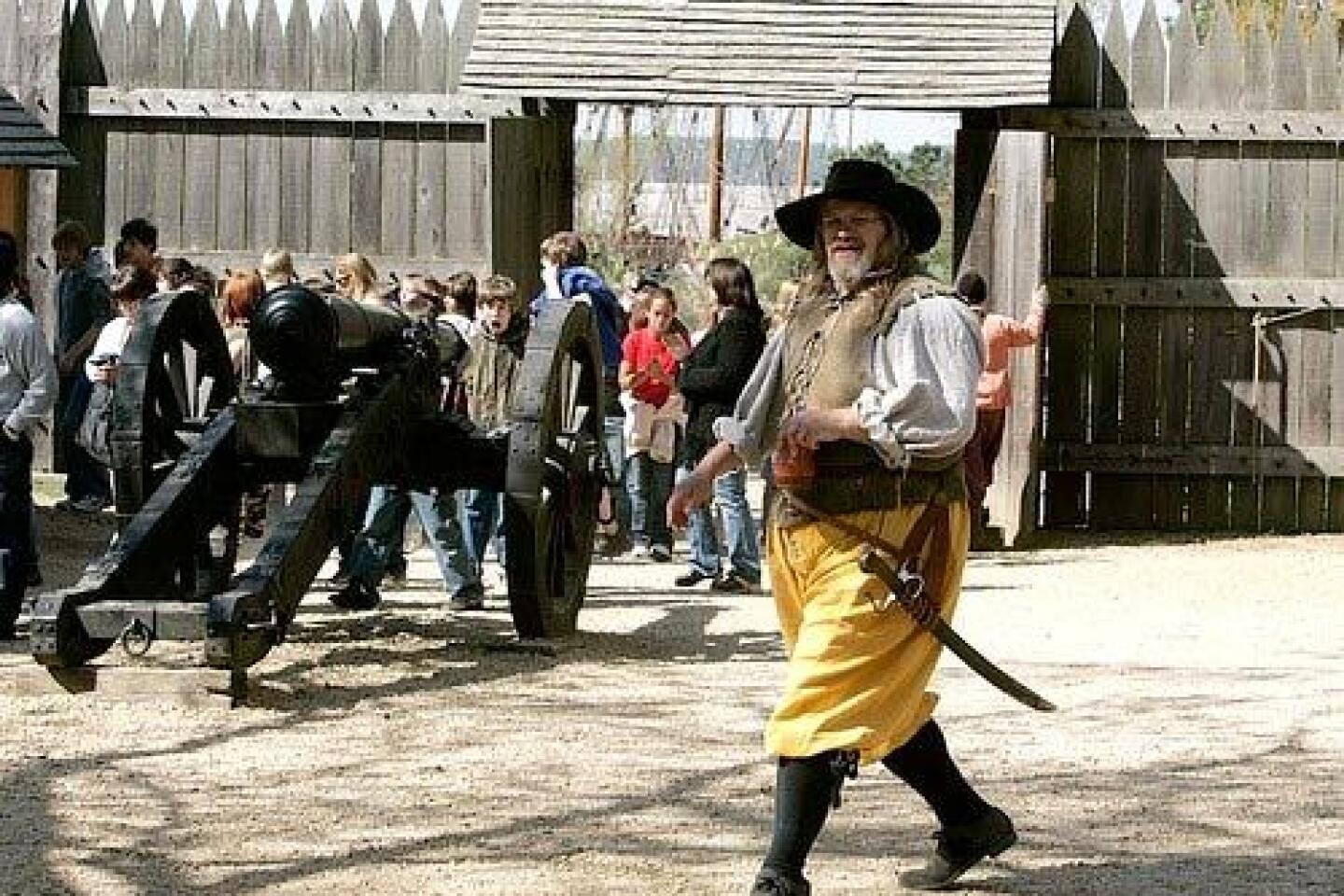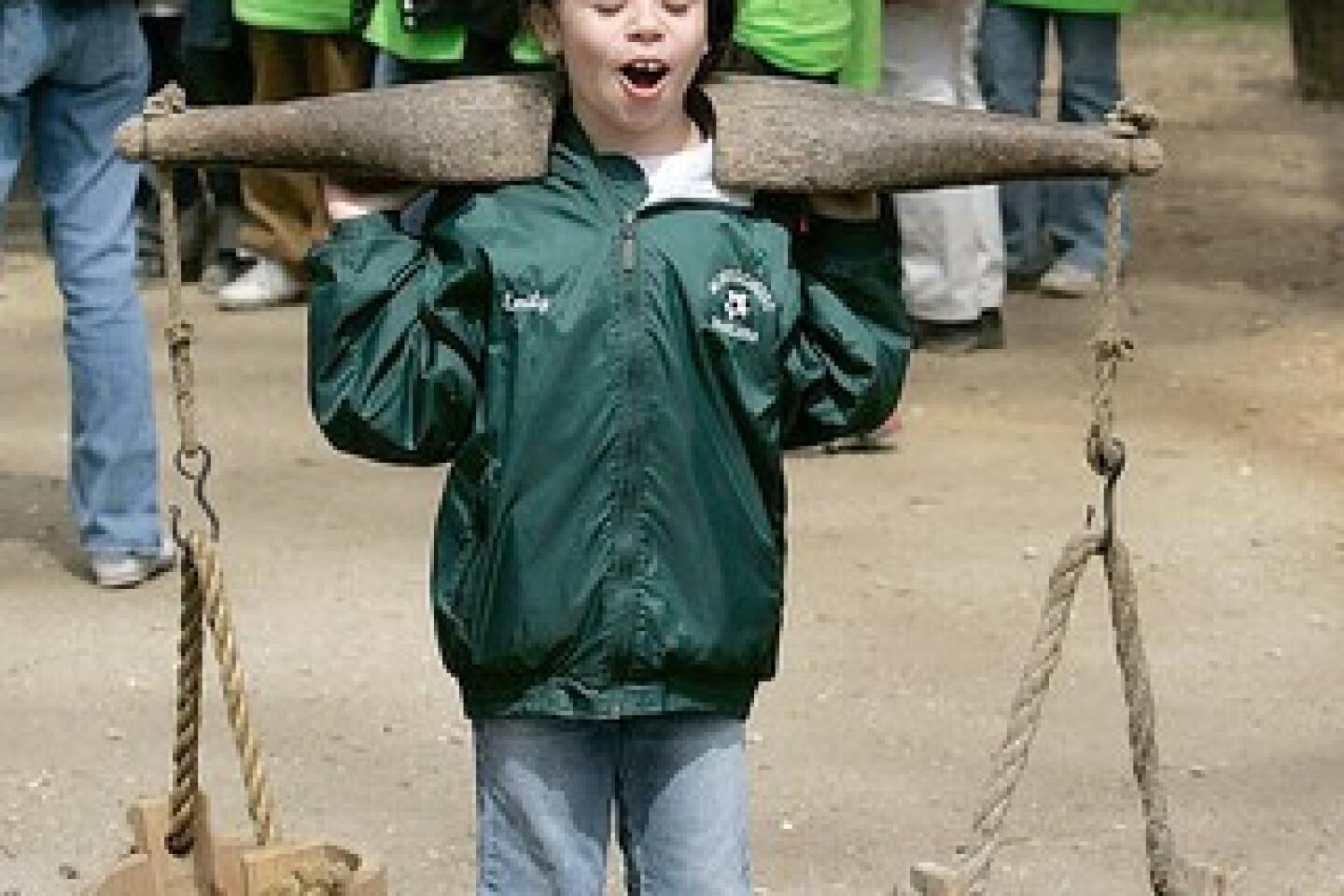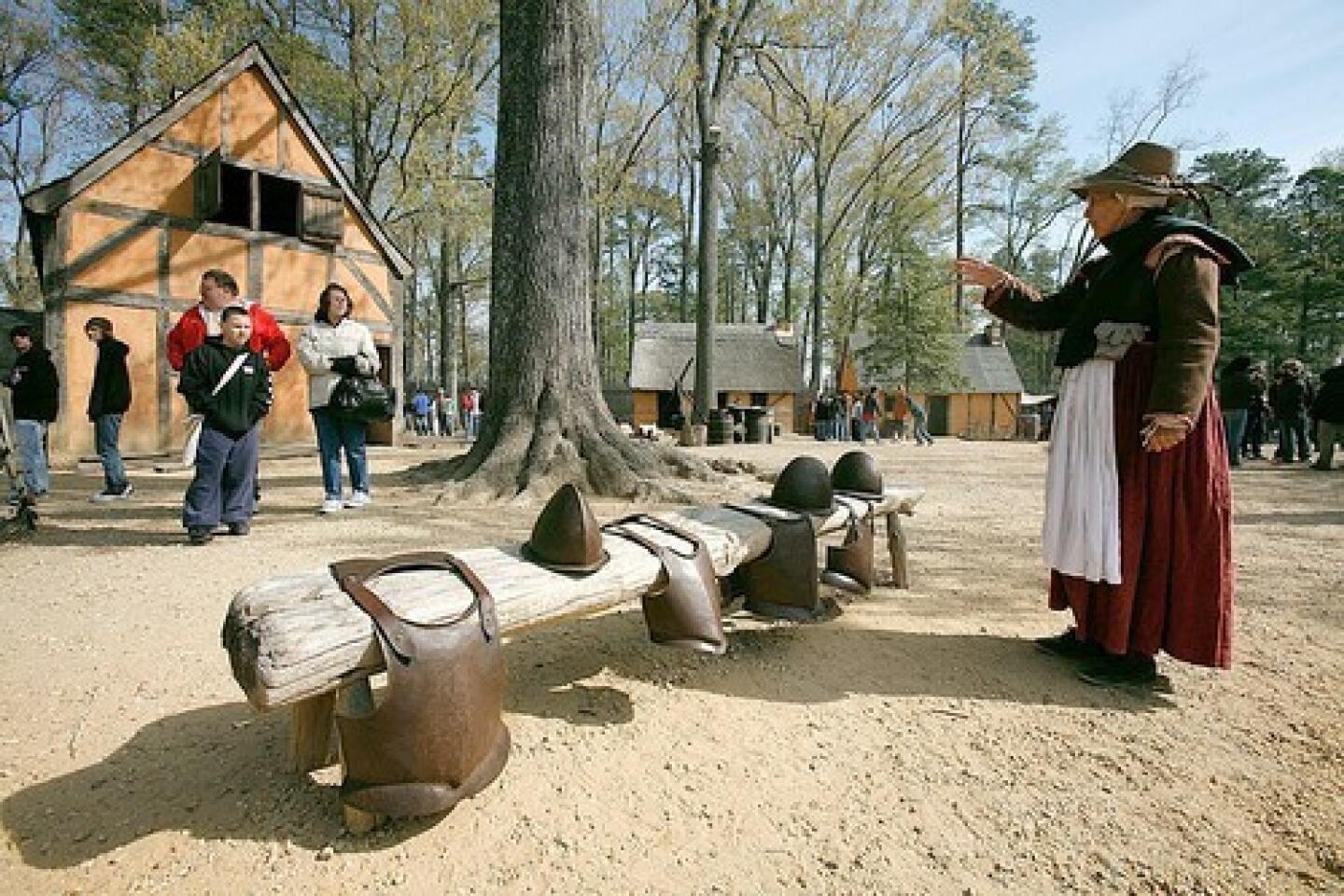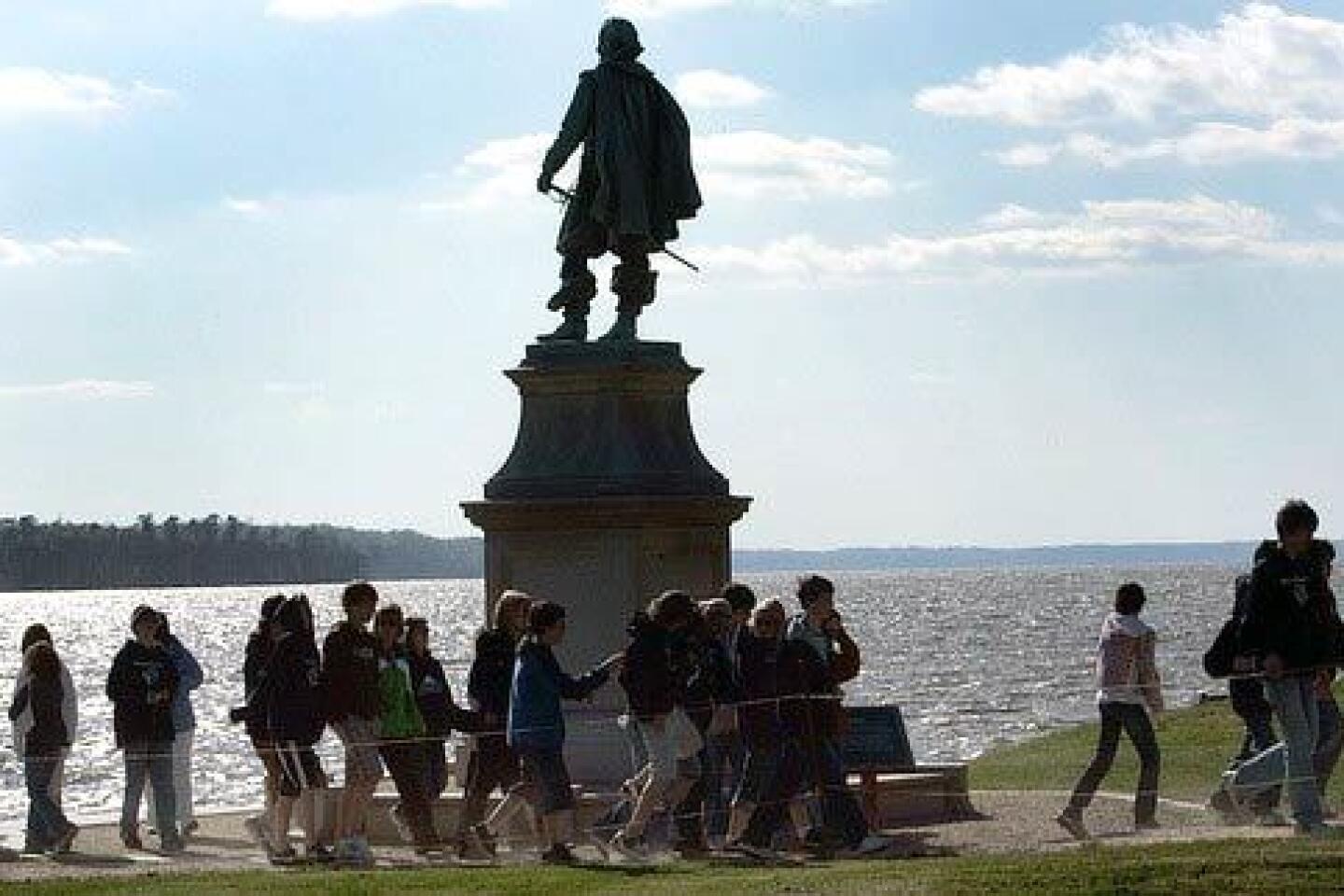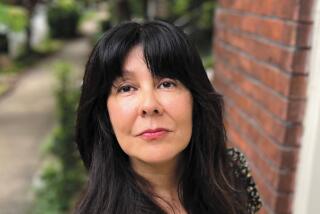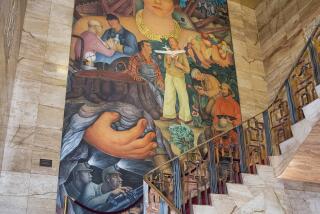A missing ‘star’ in Jamestown
Despite her legendary status, Pocahontas is all but ignored.
VIRGINIA
Jamestown, Va. — RACHEL SECAN came to Jamestown wearing her Pocahontas costume and pink snow boots. She was hoping to see something about her favorite Indian princess.
Why the fascination with Pocahontas?
“She sings good,” said the 4-year-old redhead from Raleigh, N.C., who owns a well-worn DVD of the Disney movie.
Although I didn’t dress in fringed, faux deerskin, I came to Jamestown expecting what Rachel expected: Pocahontas. She is, after all, the only reason many Americans have even a vague notion of the first permanent English settlement in North America.
But as Jamestown commemorates its 400th anniversary this year, the former colony is all but ignoring the singing Indian maiden and her purported rescue of colonist John Smith. It’s all part of an effort to be historically accurate and to acknowledge that Jamestown’s history included slavery and the taking of Indian lives and land.
Jamestown is the older, grittier and more complicated sibling of Plymouth, Mass. Every American fifth-grader knows the story of the Pilgrims and their landing at Plymouth Rock. But that happened 13 years after the English colonized Jamestown, and still they got all the credit for founding America.
All Jamestown got was a Disney movie about an Indian princess and a dubious story. Historians think Smith’s claim that Pocahontas put his “head in her arms and laid her owne upon his to save him from death” is more fiction than fact, something to bump up his book sales.
Basically, the Massachusetts colony won the battle of historic heritage with a better sound bite: The Pilgrims came to escape religious persecution; the Jamestown colonists came to make a buck.
I came out of loyalty to my new state. After moving to the Shenandoah Valley last year, I wanted to see where America was really born.
The first Jamestown settlers came to the New World in search of gold and a quick route to the Indies. They’ve been discounted as rich softies, too lazy and effete to work the land. But new archeological evidence indicates that the colonists may have been just as industrious as the saintly Pilgrims. Unfortunately, the colonists arrived during the most severe drought in the area’s history. Nothing they planted grew. . Things got so bad that the colonists ate their horses and then, eventually, one another.
Finally, the rains came, and colonist John Rolfe established tobacco as a viable cash crop. Rolfe fell in love with Pocahontas and married her in 1614, after she converted to Christianity and changed her name to Rebecca. Two years later, they took their young son, Thomas, with them and sailed to England, where she was fêted by the rich and royalty .
So, Pocahontas is kind of a star in the Jamestown story after all. But that doesn’t mean you’ll find much about her at what’s officially known as America’s Historic Triangle: Jamestown, Williamsburg and Yorktown, all looped together by the 23-mile Colonial Parkway.
As an attraction, Jamestown has complications to match its history. For starters, there are two places to visit. First, there’s Historic Jamestowne (spelled with an “e”), jointly run by the National Park Service and the Assn. for the Preservation of Virginia Antiquities. This is on the 1,500-acre island where the colonists actually lived.
Historic Jamestowne is a working archeological site that has unearthed more than one million pieces of history. One thousand of those artifacts are displayed at its new archeological museum, the Archaearium (a made-up word destined for spelling bees). Don’t miss the skeleton of J.R.102c (his archeological reference name); you can actually see the bullet lodged in his knee and, just to prove history can be fun, the exhibit is titled, “Who Shot J.R.?”
Other than the Archaearium, there’s little to see. Just some grass-covered mounds and exposed brick foundations, which are not originals but reproductions. After the building sites were excavated by archeologists, the foundations were covered up to protect them from deterioration. The only 17th century structure standing is the tower of a small brick church, built in 1686.
If you like your history more animated, there’s Jamestown Settlement, which sits at the entrance to the island. Not only have the Virginians — the site is run by the state — made Jamestown history both educational and fun, but they’ve also done it with taste and style.
Like at Historic Jamestowne, there’s a movie and an exhibit hall. But the best thing here is the re-enactment villages, where life is played out as it was 400 years ago by about 30 enthusiastic “historical interpreters.” The Settlement features replicas of the colony’s palisaded fort, its three original ships, the Susan Constant, the Discovery and the Godspeed, and a Powhatan Indian village.
If you don’t have time for both attractions, the Settlement is the place for kids. When we were there, a demonstration of muzzle-loading rifle power held three dozen kids in thrall, including Rachel in her Pocahontas dress and pink snow boots.
“The musket made a big impression,” Rachel’s mother, Debbie, 36, later wrote in an e-mail. “She told her preschool teacher that she saw a ‘biscuit’ that made a lot of noise.”
*
(INFOBOX BELOW)
400 YEARS AND COUNTING
Getting there: Jamestown, Va., is 36 miles from Richmond and 16 miles from Newport News. From LAX, AirTran, American, Continental, Delta, United and US Airways offer connecting service (change of planes) to Richmond. Restricted round-trip airfares start at $368. AirTran, Delta and US Airways offer connecting service to Newport News; restricted round-trip airfares start at $348.The big event: The Jamestown Settlement marks its 400th year from May 11 to 13 (the actual landing was May 14, 1607) with classical and pop concerts, fireworks, dance performances and other highlights, including the Virginia and Richmond symphony orchestras on May 11; progressive rock artist Bruce Hornsby and R&B singer Chaka Khan on May 12; and a massive 400-piece orchestra and 1,607-voice choir for a fireworks finale May 13. Tickets (per day): Adults $30; children 6 to 12, $15; younger than 6, free. Reservations: (866) 400-1607 or https://www.americas400thanniversary.com
Historic Jamestowne, Colonial National Historical Park, Yorktown, VA 23690; (757) 898-3400, https://www.nps.gov/colo . Price: $10 per person (children 15 and younger, free).Jamestown Settlement, Jamestown-Yorktown Foundation, P.O. Box 1607, Williamsburg, VA 23187; (888) 593-4682, https://www.historyisfun.org <252>
More to Read
Sign up for The Wild
We’ll help you find the best places to hike, bike and run, as well as the perfect silent spots for meditation and yoga.
You may occasionally receive promotional content from the Los Angeles Times.
